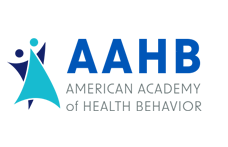Abstract
Poverty status influences obesity and dietary quality, and dietary quality influences obesity. How these relationships differ by sex is unclear. The current study aims were to 1) determine whether dietary quality mediates the relation between income-to-poverty ratio (IPR) and overweight/obesity (OV/OB) among men and women, separately, and 2) determine whether either of the mediated paths differs by sex. Four cycles of NHANES (2007-2014) were merged to obtain an unweighted study sample of 12,768 adults with complete data. Exposure variables included self-reported measures of IPR, Healthy Eating index (HEI) total score to measure diet quality, and sex. Direct assessment of height and weight was used to create OV/OB vs. normal weight categories of interest. A multiple-group moderated mediation model was conducted to evaluate the moderating effect of sex on the association between IPR and OV/OB through HEI. Covariates included age, race, marital status, education, employment, meeting physical activity recommendations, and daily sedentary time. A greater proportion of females experienced OV/OB, lower IPR, and higher HEI. The association between IPR and HEI did not differ by sex. Greater IPR was associated with lower odds of experiencing OV/OB for women and higher odds of experiencing OV/OB among men. For both males and females, HEI partially mediated the relationship between IPR and OV/OB (p < .05). While efforts to improve dietary quality of all adults regardless of income and sex is needed, improving the dietary quality of higher income men may assist with reducing their experiences with OV/OB.
Creative Commons License

This work is licensed under a Creative Commons Attribution-Noncommercial 4.0 License
Recommended Citation
Daundasekara, Sajeevika S.; Kamdar, Nipa P.; Dao, Ashley; Greer, Anna; McKyer, E. Lisako J.; and Hernandez, Daphne C.
(2019)
"Diet Quality as a Mediator of the Relation between Income-to-Poverty Ratio and Overweight/Obesity among Adults: Moderating Effect of Sex,"
Health Behavior Research:
Vol. 2:
No.
4.
https://doi.org/10.4148/2572-1836.1056




